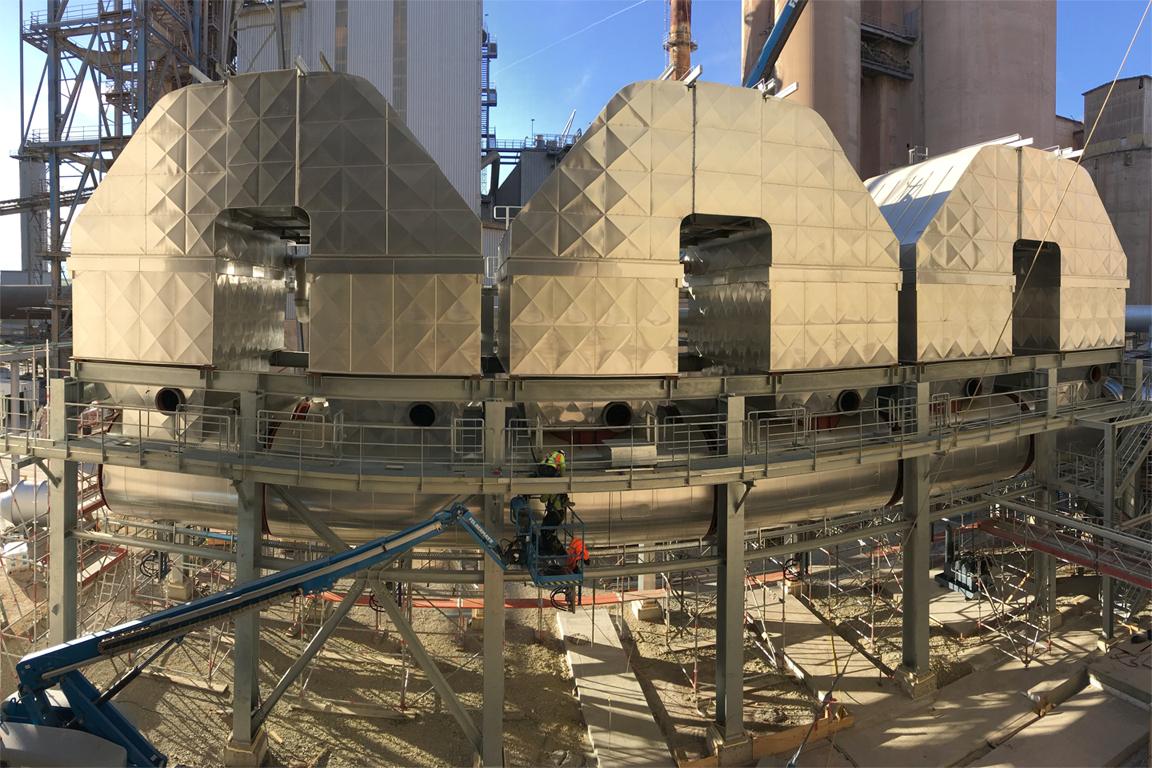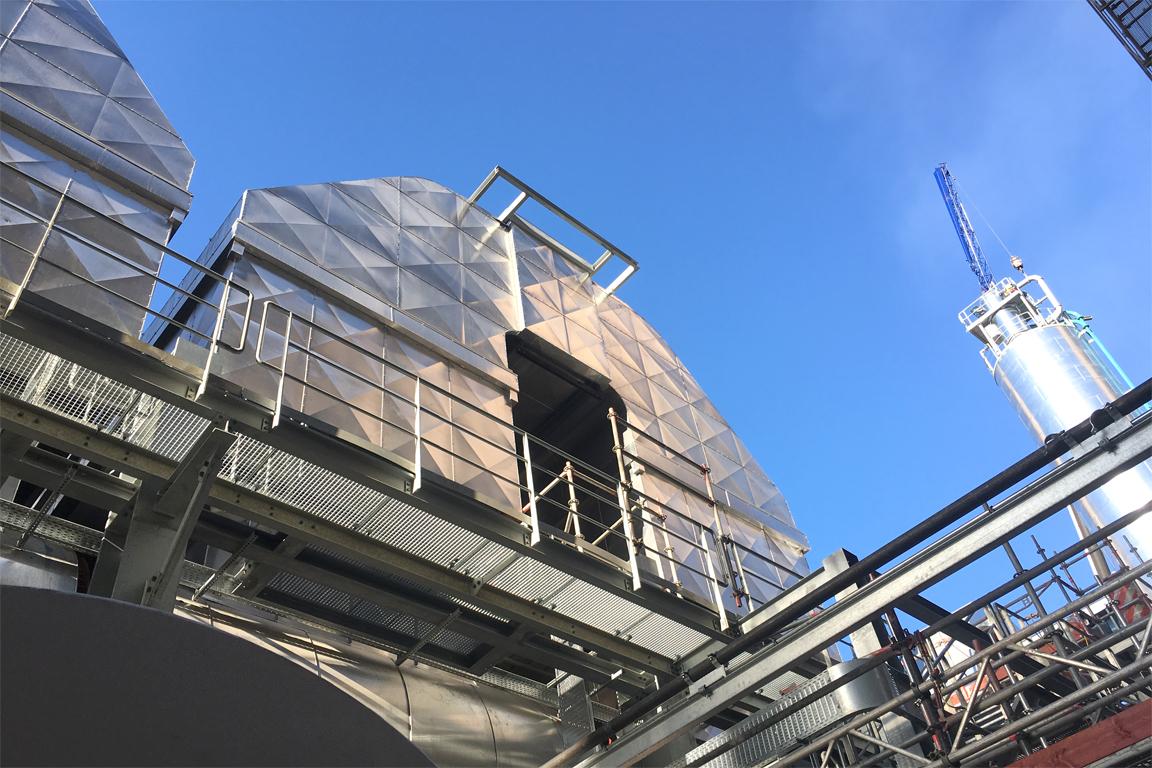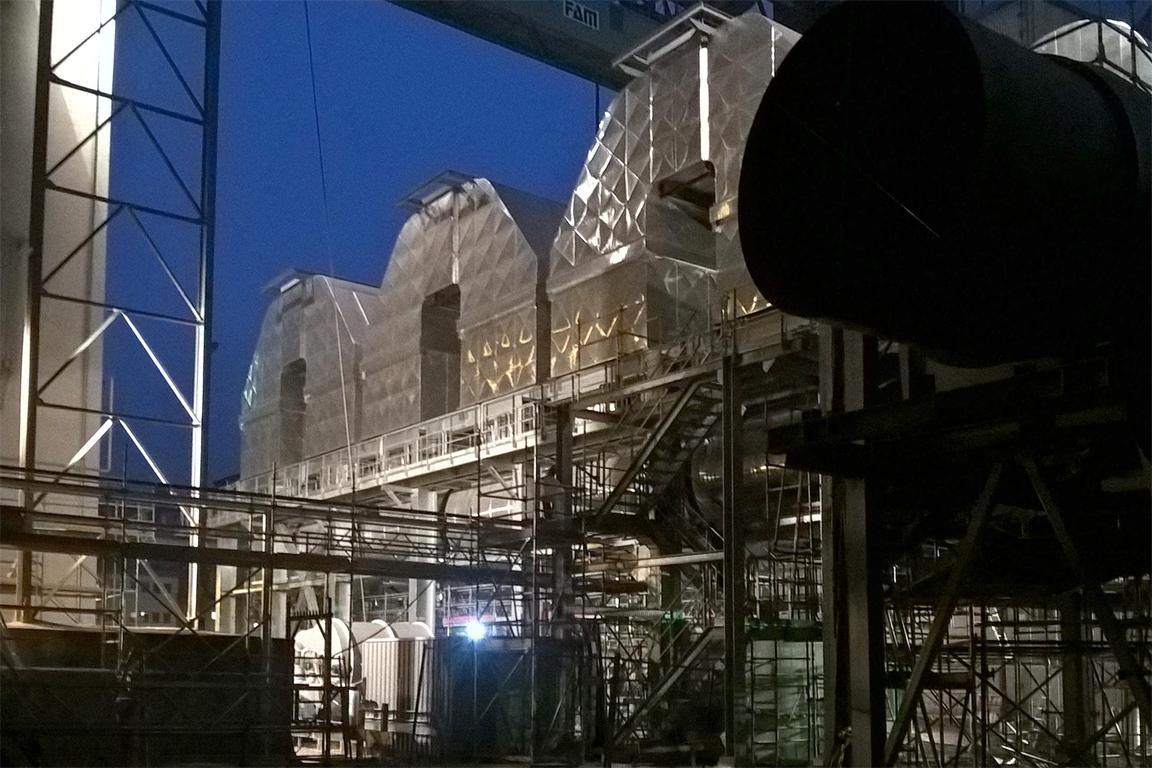Regenerative system to reduce emissions in the cement sector

Regenerative system to reduce emissions in the cement sector
CTP installed the world's first newly developed AutoNOx system, a regenerative SCR plant with associated auxiliary units.
The revision of the 17. BimSchV in Germany, which reduced NOx limits to 200 mg/Nm³ (10% O2, dry), triggered a flood of upgrades to lower emissions.
Opterra Zement GmbH, a subsidiary of CRH, decided to install RSCR systems from CTP on each of the two kilns in their plant in Karsdorf, Germany, after comparing all solutions available on the market.
Each system is designed for 270.000 Nm³/h and will be located downstream of the baghouse, that will be converted from ESP to bagfilter. Each RSCR weighs about 400 tons and is designed with 27.600 blocks. The two RSCR systems will be the first of their kind and combine the advantages of the regenerator with an SCR in a novel way.
The RSCR makes short work of NOx, cutting emissions by more than 85%, while maintaining the NH3 emissions below 30 mg/Nm³ (10% O2, dry). The existing SNCR system, currently used for NOx control, will be taken offline. The RSCR system consists of three pairs of towers, each filled with ceramic honeycombs. The catalyst is arranged between the two heat exchanger beds in each of the three pairs. Cold waste gas enters the heat exchanger from below and is heated on the way into the reaction chamber, which is above the heat exchangers. Above the ceramics, the reducing agent, e.g. ammonia water, is finely dispersed into the gas stream through a distribution grid, before the gas passes through the SCR catalyst. The cleaned gas then passes through another heat exchanger and leaves the system.
In order to cover energy losses of the system and evaporate the reducing agent, an external loop is required. Gases are drawn from the reaction chamber downstream of the catalyst. They are heated up in a separate burning chamber before the reducing agent is injected. The mix is then brought back to the reaction chamber upstream of the catalyst and introduced through the distribution grid.
Since the regenerator provides unparalleled thermal efficiency, the amount of fuel to be added is kept to a minimum. Therefore this RSCR does not rely on the availability of additional heat in the plant and a costly heat transfer system to utilize it, which saves significant cost.
Some other News

We are excited to announce that we will be participating in the IFAT trade-show in Munich!

Are you considering switching to E-Heating?
With the current efforts to reach long term sustainability goals, and with the dramatic increase in carbon prices, which is expected to reach €147/t by 2030, companies are rethinking their methods.

CTP has successfully completed an air pollution control system for one of the leading suppliers of electric vehicle battery components in Hungary. CTP delivered 4 identical RTO's (VOXcube 5-800) with steam generators, with a completion of the installations in six months.

Happy holidays from the entire CTP team! Our office will be closed from December 23rd, with operations resuming from January 8th, 2024. We would like to thank our suppliers and customers for your partnership, and we look forward to doing business with you in the new year.

As 2023 comes to an end, we would like to highlight the completion of one of our air pollution control plants for one of the leading suppliers of electric vehicle battery components in Hungary. CTP delivered 4 identical RTO's (VOXcube 5-800) with steam generators, with a completion of the installations in six months.




